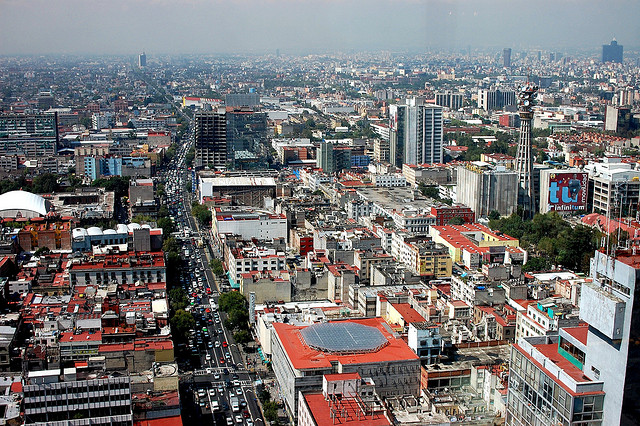 |
| Latin American Modernism |
Modernism in Latin America was a literary and cultural movement developed at the end of the 19th century. In Latin America, the word was adopted at the end of the 19th century to identify a cultural proposal intended to respond to the demands and requirements of modern times.
Modernism represented a complex concept at the time, since it recovered the aesthetics and ideology of romanticism but aimed to connect Latin American culture with major traditions of the Westernized world.
The modernization, democratization, and industrialization of Latin American capitals created a new public realm in which culture diversified and reached a new audience. Its main representatives were Rubén Darío (1867–1916), Manuel Gutiérrez Najera (1859–95), José Martí (1853–95), Ramón López Velarde (1888–1921), and José Asunción Silva (1865–96).
  |
Octavio Paz (d. 1974) characterized modernity as a philosophical concept as well as a condition that had its beginning in the romanticism of the late 19th century. Modernity is founded in the construction of the notion of progress and human-generated change, which envisions a better future. The idea of modernity in Latin America was inherited from 19th-century Europe, particularly France.
There is little doubt that Baron Haussmann in Paris had huge success as an urban strategist in Latin America. The baron's spectacular interventions in Paris were soon embraced as urban savoir faire and strengthened French predominance not only in social and political thought but also in the fine arts and city design.
Latin American elites worshipped Haussmann's Paris as the ultimate model to follow in order to join the capitalist circuit of world cities. Urban reforms in general and urban renovation in particular were part of a package to modernize urban structures.
Urban planning in Latin America has been legitimized by ideological frameworks that nevertheless have been used to manipulate and enhance power structures over time. The idea of planning became part of the political agenda at the end of the 19th century, when national caudillos (dictators) ruled their countries following enlightened and hygienist models from Europe in order to "modernize" the countries.
Nevertheless, at the beginning of the 20th century, a more European model started when residential colonias (residential districts) around public spaces and modern infrastructures and services emerged. The districts were developed by private international investors, who profited from the government provision of licenses and tax benefits to enhance real estate developments.
Under different dictatorships and with a stable economy, the cities aspired to access world-class circuits, even when income disparities and social inequalities were developing and strengthening a dual socioeconomic system. Planning had been characterized by hierarchical decision making, the legitimization of plans by groups of "experts," and international businessmen taking a leading role.
However, at the time, Mexico City and San Salvador were the only cities with more than 100,000 inhabitants, which showed the limited diversity of economic development they had achieved when mining became no longer profitable.
At the end of the 19th century, French urbanism was very influential all over the continent, especially after Baron Haussmann's interventions in Paris, which were considered compelling highprofile urban operations to transform capital cities, such as Buenos Aires, Rio de Janeiro, and Caracas, into world-class cities. Later in the 20th century the continent experienced considerable economic expansion, the modernization of infrastructures, and a process of urbanization without precedent.
Even when a rapid process of adaptation and assimilation of modernity occurred, leading to cultural integration of different societal groups, it is also true that this could only be achieved through a certain amount of alienation and displacement of the local culture and traditional society. The history of modernity has been the quest for progress, which represents a long-sought aim and a recurrent framework that is never to be achieved in its totality.
In the late 19th century science and industrialization were considered the foundations of progress, embodying a rational, objective, and unquestionable tool of production and human knowledge. Modernity represented an ideal image of progress and the idea of an advanced model of living according to the economic, political, and intellectual elite. As reality was demonstrated to be far more complex, the idea of modernity became a supreme metaphor for a homogeneous and harmonic reality.
Along with this cultural movement, positivism provided the philosophical grounds to maintain the idea of progress through the actions of the elites as representatives of a Darwinian natural selection. This philosophical approach also provided a general plan of government with the slogan "liberty, order and progress," where liberty would be the means, order the general framework, and progress the ultimate end.